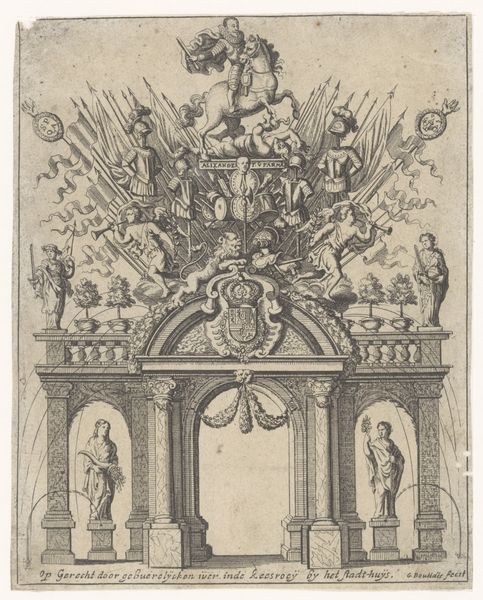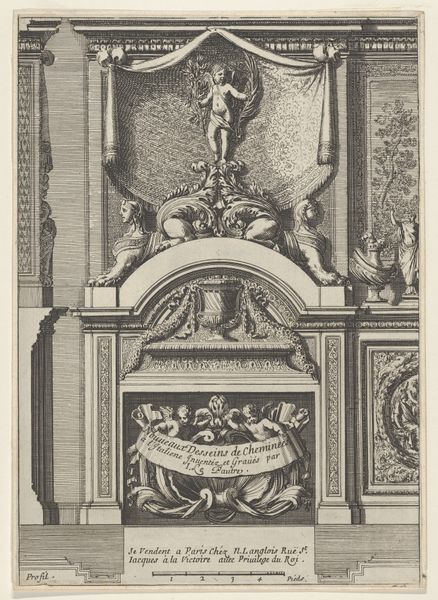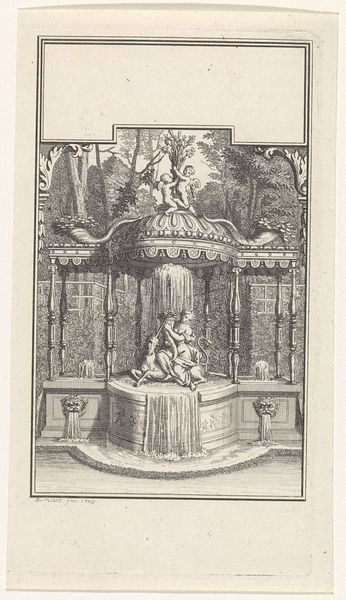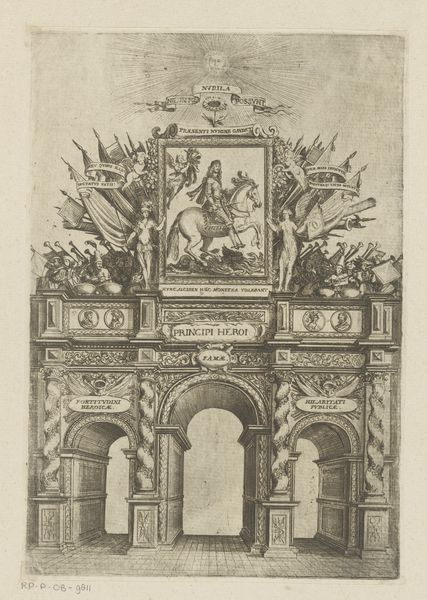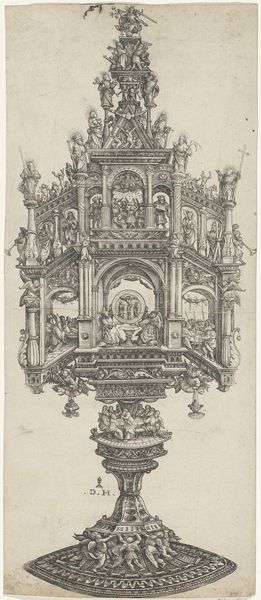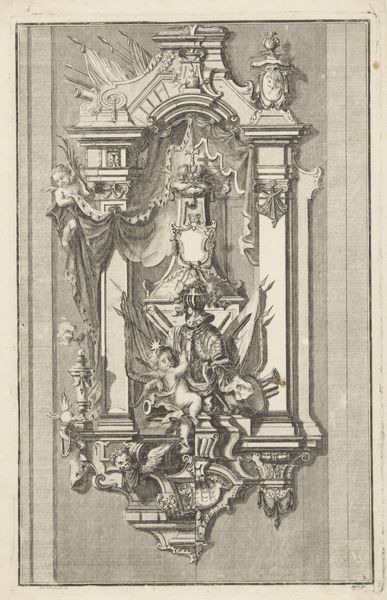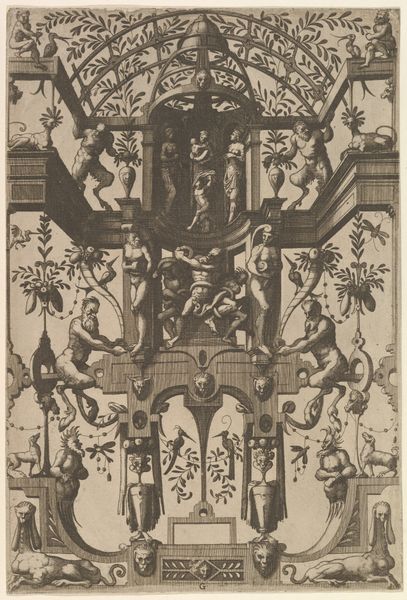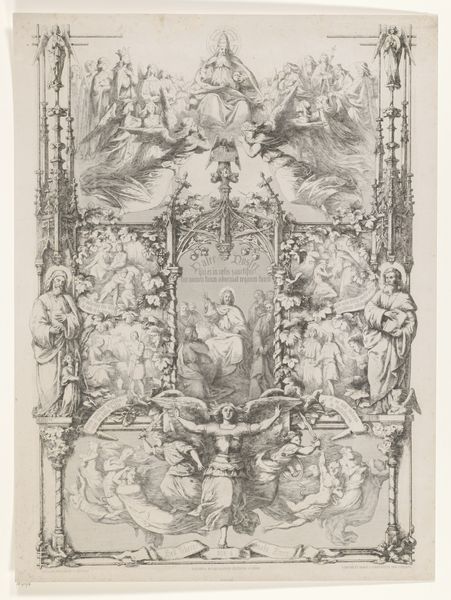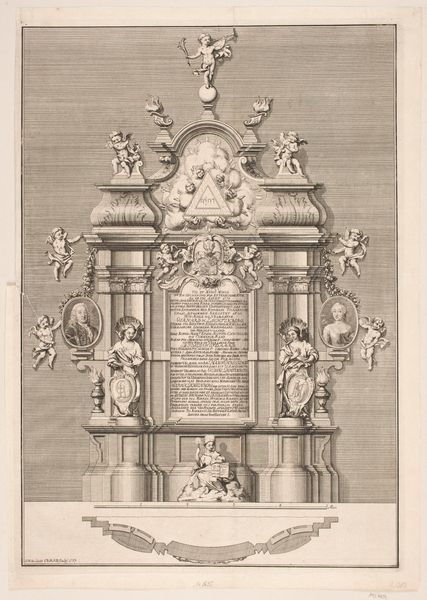
Triomfpoort opgericht in de Kipdorp bij de Sint-Jacobskerk before 1685
0:00
0:00
print, etching
#
baroque
# print
#
etching
#
figuration
#
cityscape
#
history-painting
Dimensions: height 178 mm, width 137 mm
Copyright: Rijks Museum: Open Domain
Editor: This is "Triomfpoort opgericht in de Kipdorp bij de Sint-Jacobskerk," a pre-1685 etching by Gaspar Bouttats, currently at the Rijksmuseum. It’s a pretty ornate cityscape. What strikes me are the sheer amount of classical allusions...where does one even begin to unpack all of this? Curator: It’s a fascinating visual layering of cultural aspirations, isn't it? Look at how the triumphal arch itself isn't just a structure but a stage, teeming with figures, emblems. Do you notice how it blends earthly celebration with something almost...divine? Editor: You mean with the mythological figures placed on top of the arch? Curator: Exactly! Ask yourself, why Neptune, why these particular allegories placed so prominently? They become vehicles, don’t they, for the city to project its power, its virtues? It’s not simply about recording a cityscape; it’s about creating a narrative, linking Antwerp to a lineage of greatness. How does the arch's setting, that dense, almost theatrical backdrop, play into this narrative? Editor: It's as if the arch emerges from a wild, uncontrolled space. It makes the triumph of civilization – or at least, Antwerpian civilization – even more stark. The architecture itself seems to grow organically. But it also makes it feel slightly removed from reality. Is it meant to be read literally? Curator: That tension, that blend of reality and idealized representation, is key. These arches, common for civic celebrations, were inherently ephemeral. Bouttats captures not just their appearance, but the aspirations they embody. Consider how symbols shape not only our memory of events, but our understanding of our place in the world. Do you feel like it is effective as an allegory? Editor: It's a little overwhelming. I'm struck by the deliberate construction of a kind of "visual propaganda." It definitely provides a window into the city’s self-image back then, its aspirations of greatness. Curator: And also its need to convince both its citizens and the outside world. Now you are beginning to see its true purpose!
Comments
No comments
Be the first to comment and join the conversation on the ultimate creative platform.
